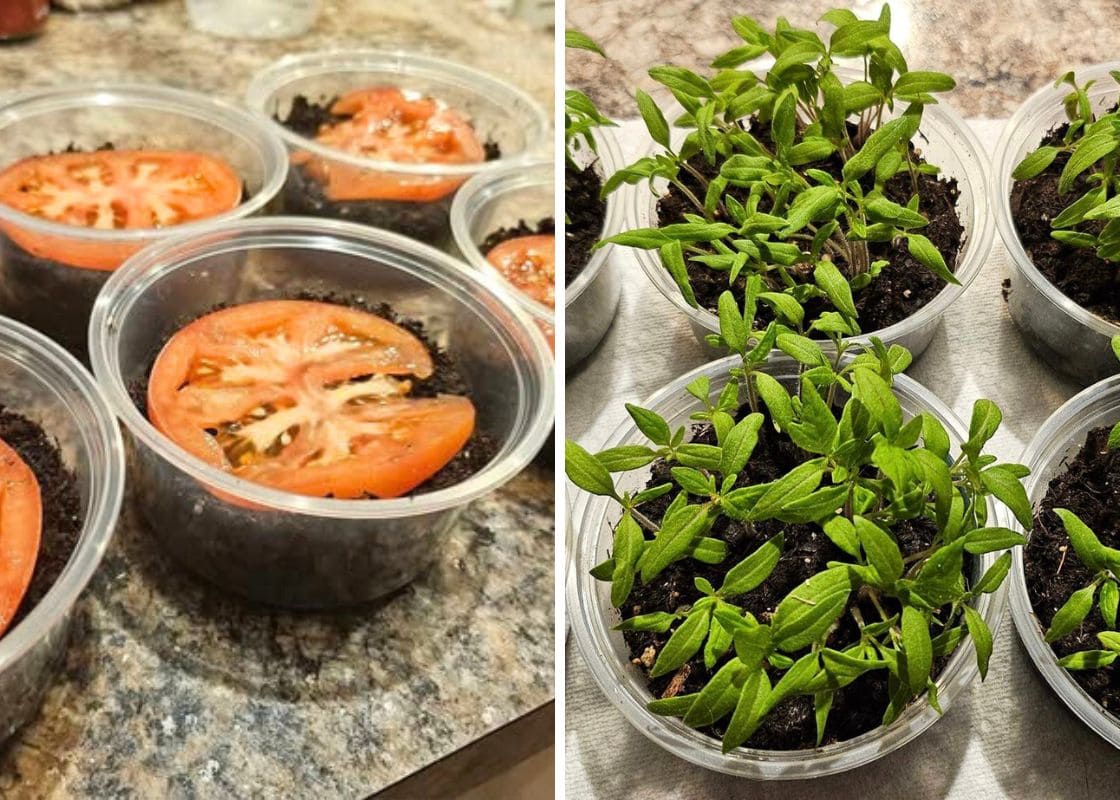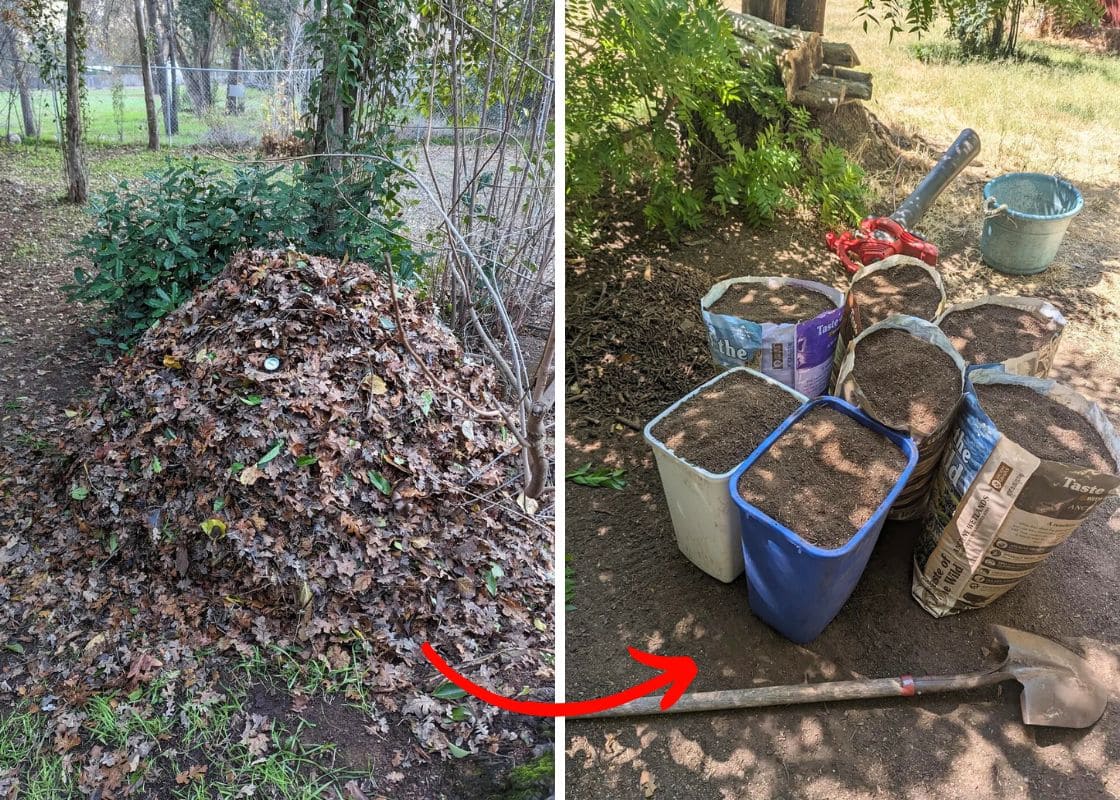In gardens and meadows, cosmos flowers burst with vibrant colors and delicate petals.
These resilient blooms thrive in various environments, from cozy backyard gardens to expansive wildflower fields adding a splash of color wherever they grow.
With just seeds, soil, and sunlight, you can plant these celestial blooms in your garden. So, let’s start this enchanting journey and bring the beauty of cosmos flowers into your life.
Summary:
- Cosmos flowers are vibrant, resilient blooms that thrive in USDA hardiness zones 9-11.
- You can plant cosmos successfully by sowing seeds directly outdoors or starting seeds indoors.
- You should water for the flowers consistently during germination and provide full sun as well as mulching.

| Botanical Name | Cosmos sulphureus, Cosmos bipinnatus |
| Common name | Cosmos, Mexican aster, cut-leaf cosmos |
| Family | Plantaginaceae |
| Plant Type | Annual |
| Height | 1-6 ft. tall, 1-3 ft. wide |
| Sunlight | Full sun |
| Soil | Well-draining soil |
| Flower Color | Golden yellow, white, pink, magenta, orange, yellow, red, chocolate |
| Flowering Season | Summer through fall |
| Habitat | Northern South America, Central America, and Southern North America |
Propagation
Seed Sowing
I’ve found that seed sowing in the spring right after the last frost is the best method. One chilly April morning, I tilled the soil and mixed in rich compost to boost fertility.
Next, I carefully planted the cosmos seeds about a quarter inch deep, leaving about 12-18 inches of space between each one. Then I watered gently and let them enjoy the sunlight.
Within 7 to 21 days, tiny green sprouts began to appear, each one a promise of the vibrant blooms to come.

Stem Cuttings
If you want a quicker result, use stem cuttings method. Firstly, you should select a healthy shoot with 3-5 leaf nodes and make a precise cut just below the last leaf node.
Then, you gently remove the lower leaves, leaving the last node intact.
You should plant the cutting in a pot filled with moistened, well-draining soil, making sure the last node stayed above the soil line.
Within 2-4 weeks, new leaves began to appear, a sure sign that your cutting had rooted successfully.
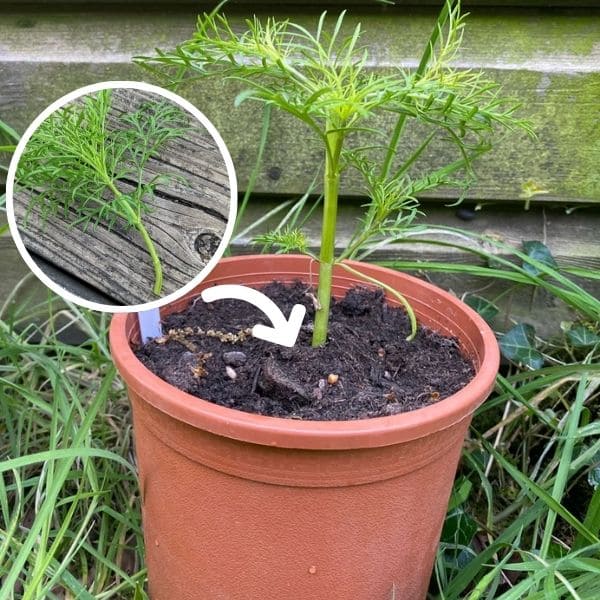
Growing Cosmos Flowers
Preparation
There are over 25 types of cosmos, each of them has differences in height, color and fragrance. Here are my favorite types:
- Cosmos Sensation Mix: Height 5 feet, showing a dazzling array of lavender, pink, red, and white blooms with a mild fragrance.
- Cosmos Sonata Mix: Height 1.5 to 2 feet, with vibrant hues of orange, yellow, and red, emitting a delicate scent.
- Cosmos Xanthos: Soft yellow blossoms on petite plants, reaching 1 to 1.5 feet, with a citrusy fragrance.
- Cosmos ‘Double Click Mix’: Height 4 to 5 feet, adorned with doubled petals in pink, white, and burgundy.
- Cosmos ‘Sea Shells Mix’: Height 2 to 3 feet, featuring unique fluted petals in shades of pink, white, and deep red.

You should opt for cosmos seeds from reliable stores, ensuring they are uniform in size, shape, and color, and free from debris or signs of damage.
Besides, one corner of your garden with at least 6-8 hours of direct sunlight daily will be ideal to become their new home.
Finally, prepare well-drained soil with a slightly acidic to neutral pH, between 6.0 and 7.0. It’s better for you to add rich compost into the soil, enhancing its fertility and drainage.
Sowing Seeds Directly Outdoors
If you live in a region with mild, consistent spring weather, like the Pacific Northwest, this method tends to be faster and more successful.
In spring, you should rake the soil into a fine tilth and lightly moistening it, then scatter the cosmos seeds thinly over the soil and cover them with a light layer of earth.
Within 7 to 21 days, little green shoots begin to appear. When the seedlings reach about 2 inches tall, you carefully thin them to 12-18 inches apart.
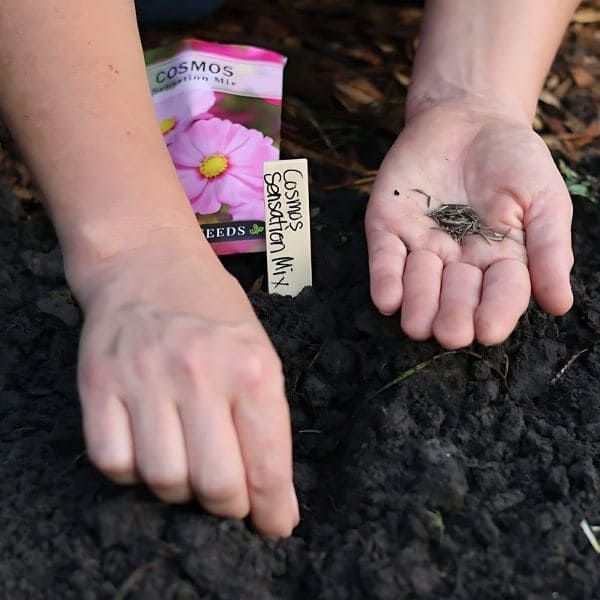
Sowing Seeds Indoors Then Transplanting
Wheneger I want a head start on the growing season, I often start cosmos seeds indoors.
About 4-6 weeks before the last expected frost, I prepare my trays with drainage holes and fill them with a good seed-starting mix.
Next, I sow the seeds about a quarter inch deep and give them a gentle watering to moisten the soil. The trays then go to a warm spot in my home with the temperature between 65-75°F (18-24°C).
Once the seedlings emerge, I set them under grow lights or near a sunny window.

Especially, you should note that before transplanting, harden off the seedlings by gradually exposing them to outdoor conditions over the course of a week to help them adjust to the change in environment.
After the last frost has passed, and the seedlings are about 4-6 inches tall, I transplant them outdoors, spacing them 12-18 inches apart in prepared soil.
Plus, over 2 seasons of growing cosmos flowers, I see that we can pair them with marigolds, zinnias, or sunflowers to attract beneficial insects and boost the overall health of the garden.
Care for Cosmos Flowers
The following are main requirements for growing cosmos flowers:
- Provide well-drained soil and full sun (6-8 hours).
- Ensure the soil remains consistently moist but not waterlogged.
- Deadhead blooms to encourage continuous flowering.
- Fertilize with a balanced fertilizer every 4-6 weeks during the growing season.
- Support taller varieties with stakes or trellises.
Light
Cosmos flowers thrive in full sunlight, they need 6-8 hours of direct sunlight daily for optimal growth and abundant blooms.
Too much shade results in poor flowering and spindly growth, while partial shade may lead to fewer blooms and less vigorous plants.
Soil
Cosmos flowers thrive in well-drained, light soil with a pH ranging from neutral to alkaline (6.0-7.0).
You should apply mulching to help conserve moisture, particularly in warm climates, while protecting against extreme heat and promoting healthy growth.
However, prolonged periods of wet and cold should be avoided, as they can delay flowering and cause issues like root rot.
Water
During the seed germination period, you need to maintain consistently moist soil and adjust watering frequency as needed.
Once the seedlings emerge, I switch to watering them about 1 inch once a week in the morning. This routine helps the young plants develop strong roots without becoming waterlogged.
As the cosmos plants mature, I’ve found they thrive in drier soil and need minimal watering. They grow robust and produce abundant blooms with little fuss.
Temperature and Humidity
Cosmos flowers flourish in USDA hardiness zones 9-11 with the temperatures hover between 65-75°F (18-24°C).
One of the reasons I love growing cosmos is their resilience to varying humidity levels.
While they perform best in moderate humidity, I’ve seen them do just fine in less-than-ideal conditions too. So, they become a reliable choice for many gardeners.
Pruning
To maintain compact, bushy growth, you need to prune tall and spindly cosmos plants in midsummer.
Cut them back to a height of 12 to 18 inches, making the cut at a 45-degree angle just above a healthy set of leaves to encourage the development of new branches and ensures a fuller, more robust plant.
Staking
Tall cosmos varieties, reaching up to 8 feet (2.5m) with 3-inch (8cm) flowers, benefit from staking to prevent flopping.
You can consider securing young plants with sturdy supports like bamboo stakes for upright growth and sturdy blooms.
Fertilizer
While Cosmos flowers can withstand poor soil and often thrive without fertilizer, excessive application can lead to lush foliage but minimal blooms.
Therefore, you only need to fertilize if plants show signs of deficiency, as these resilient flowers typically do not require additional nutrients for healthy growth and abundant flowering.

Pests and Diseases
While Cosmos flowers are generally resistant to pests, they may occasionally encounter issues such as aphids and spider mites.
These pests can sap the plant’s vitality by feeding on its sap and lead to stunted growth. But don’t worry, you can control them easily with insecticidal soap or neem oil.

In addition, cosmos flowers can also be susceptible to powdery mildew, a fungal disease that appears as a white powdery substance on leaves, stems, and flowers.
You can prevent this problem by ensuring good air circulation around plants and avoiding overhead watering.
Common Problems
Wilting or Leaf Discoloration
Overwatering, underwatering, poor drainage, or extreme environmental conditions like heat or cold can cause limp, wilted, or discolored leaves.
If not addressed, it can lead to reduced plant vigor and hindered growth, impacting flower production.
Yellowing Leaves and Leaf Drop
Yellowing leaves on cosmos plants, followed by leaf drop, indicate stress or imbalance.
I’ve learned to be mindful of my watering habits, ensuring I don’t overwater or underwater the plants. Specially, I have to regularly check for pests.
Flowers Distorting or Stunting in Growth
This issue is due to a pest problem, such as aphids or spider mites, or a fungal issue like powdery mildew. Sometimes, environmental stressors play a role too.
You should make it a habit to inspect the plants regularly, and if you notice any abnormalities, tackle the problem right away.
Harvest
After about 12 weeks, the vibrant blooms are ready to be picked. I always aim to harvest in the morning when the buds just begin to crack open to ensure the flowers are at their freshest.
When cutting the stems, I make deep cuts into the plant, between two sets of leaves, and I try to get stems that are at least 18 inches long.
After that, I plunge the blooms into warm water and strip the lower leaves to keep them fresh longer. By regularly refreshing the water, I can enjoy my cosmos in a vase for up to 10 days.

Preservation
I love preserving cosmos flowers by hanging the bundles upside down in a warm, dry spot with good air circulation.
Within 1-2 weeks, your flowers will become crisp to the touch and the stems will turn brittle. They are signs of success and you can store them in a cool, dark place to maintain shape.
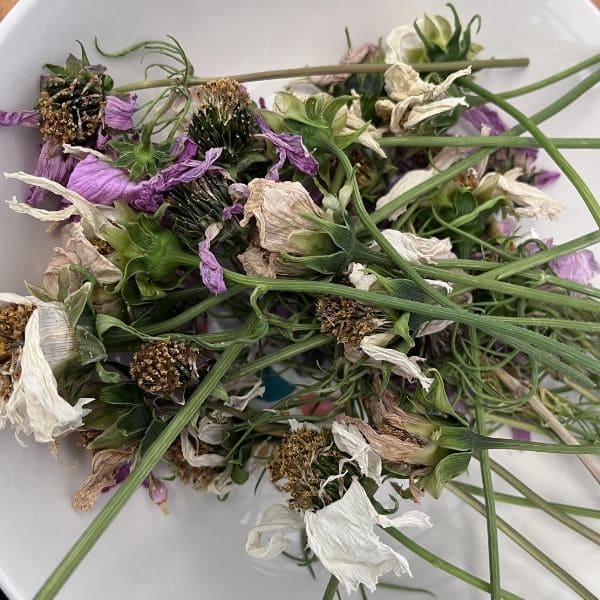
Besides, if you want to preserve seeds, wait until the flower heads have dried on the plant and turned brown. Then, cut the flower heads and place them in a paper bag to continue drying indoors for a few weeks.
Next, you need to shake the flower heads to release the seeds. Now, you can store them in a cool, dry place, ready for future planting or share with friends.
FAQs
Do cosmos come back every year?
Cosmos flowers are typically annuals, which means they complete their life cycle in one growing season and do not return the following year.
However, they are prolific self-seeders. If you leave some flower heads to dry and drop their seeds, you might find new plants sprouting the next season without any extra effort.
Can cosmos be grown in pots?
Yes. You should choose a container that is at least 12 inches deep and has good drainage.
In addition, you can use a well-draining potting mix, place the pot in a sunny location and water the plants regularly.
Do cosmos flower twice?
Cosmos flowers have a long blooming period and can produce flowers continuously throughout the summer and into the fall.
By deadheading, or removing spent blooms, you can encourage the plant to produce even more flowers, effectively giving the appearance of multiple blooming cycles.
How do you revive cosmos flowers?
If your cosmos flowers appear to be struggling, first check the soil moisture. Cosmos prefer well-drained soil and can suffer from overwatering or underwatering.
Additionally, for cut flowers in a vase, you need to keep the water fresh and trim the stems regularly to extend their vase life.


